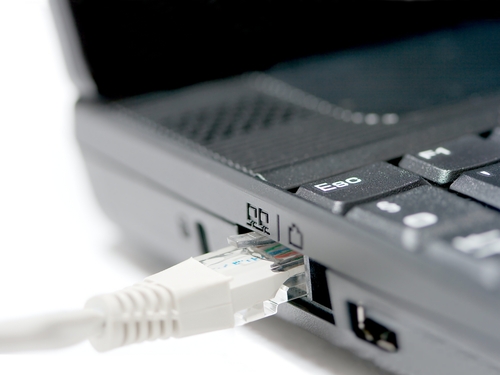The growth of fixed broadband globally is not as strong as wireless broadband. The expense associated with building fixed broadband infrastructure makes it impossible for most economies around the world. Wireless on the other hand, uses the infrastructure that is already in place for mobile phone service to upgrade the technology.
The research from ABI points out the growth of fixed broadband will be an estimated 618.7 million subscribers by the end of 2012, with an increase of 7.3 percent from 2011. The penetration rate will increase the total amount to more than one third of the world’s household population.

Image via Shutterstock
The growth is the result of DSL, cable and fiber-optic fixed broadband platforms. According to Jake Saunders, VP and practice director of core forecasting at ABI Research (News - Alert), “Development of next generation broadband networks is creating opportunities to upgrade customers to fiber optic. Fiber optics broadband market-share is expected to increase to 13.2 percent by YE-2012 from 12 percent in 2011, while DSL market-share will decline nearly one percent point from 64 percent in 2011.” The growth for DSL on the other hand grew by only 1.2 percent from the first quarter of 2012 adding only 4.3 million subscribers.
The region with the highest fixed broadband penetration rate is North America, with 72.4 percent. Western Europe is second with growth of more than 1.2 million subscribers by the second quarter of 2012 increasing the percentage of the penetration rate to 72 percent.
The research shows the increasing demand for fast broadband speeds by consumers. As soon as new technologies with higher speeds become available, the service is quickly overwhelmed with demand. By the end of the second quarter in 2012, more than 44 percent of subscribers were using services with 10 Mbps and above. The demand for this speed correlates to the increase of connected devices such as smart TVs and services over broadband networks.
Operators in regions around the world also saw differing results in the increase of business for service providers. The majority of operators in North America only saw an increase of almost .08 percent, while Cox (News - Alert) Communications grew by almost 3.0 percent. In Europe, the growth was uniform with major providers including British, Deutsche and Iliad telecoms experiencing an increase of more than one percent.
As wireless broadband technology increases in reliability and capability it will start capturing shares from fixed broadband service providers. Consumers are increasingly becoming mobile-centric, ditching laptops and desktop computers for smartphones and tablets. This, however, doesn’t apply to businesses that depend on the speed and reliability of fixed broadband speed.
Edited by Brooke Neuman
